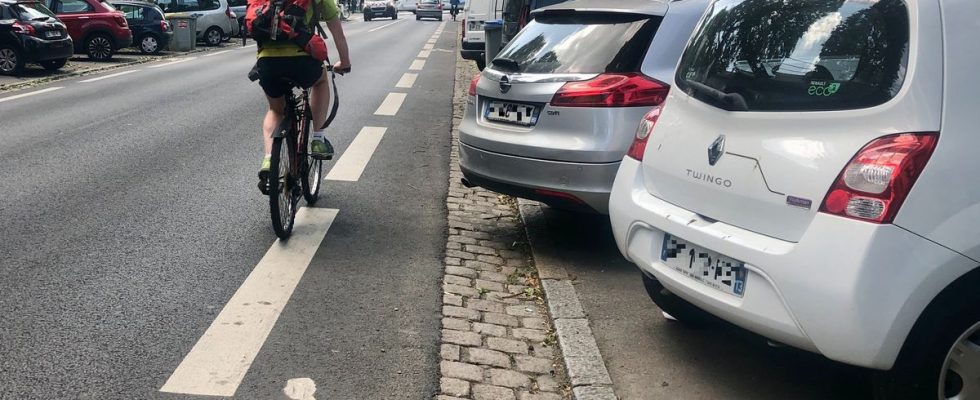In the highway code books, there are three types of parking: on the cob, in a battlement or in a niche. If the first two are the easiest to execute, they seem to be rare in cities, where the space to park your car tends to be reduced anyway. In Nantes, for example, major works will take place soon for the eventual “recovery” of some 2,370 parking spaces located along the large circular boulevards, starting with the Boulevard des Belges this summer.
“The vehicles are getting bigger and bigger, which means that it overflows on all sides, notes Aurélien Boulé, elected to the city of Nantes in charge of the development of cycling practice. They encroach on the bike path, which is very unsafe for bikes. On the sidewalk, it’s inconvenient for pedestrians. Until now, there was a tolerance for these parking lots but they are, in any case, not regulatory. »
Boulevard de Doulon, the first area chosen, the work has recently been completed: cars must now park in a niche, parallel to the road. Bitumen has been removed to make way for grassy and planted areas, while additional bicycle racks and benches should be installed. Small wooden barriers have been fixed to the ground to prevent vehicles from coming to park askew. “It is sure that it is prettier, notes a local resident. But I don’t have a garage, it could be a real problem to find a place. »
Between motorists and cyclists, not the same reactions
Indeed, according to the city (which is taking advantage of the widening of the paid zone to initiate these changes), the number of pitches will be reduced by around a third as a result of these adjustments. “It’s a real problem because it’s an additional measure that helps to remove parking spaces, reacts Philippe Nozière, president of the association 40 million motorists, who confirms that he sees fewer and fewer places on the cob . It’s always the same subject: driving the motorist out of towns. But with the development of the ZFE, if motorists can no longer enter the city center, they will nevertheless need to park”.
On the side of the cyclists, the tone is obviously not the same. Because in Nantes, this request has been made for many years by the association Place au vélo. “Motorists leaving these places have very little visibility, which forces cyclists to move away from the cycle lane, even causing regular accidents, notes Annie-Claude Thiolat, the president. I have a recent example where the person was seriously injured and the bike badly damaged. »
As in Nantes Métropole, the government’s objective is to achieve a 12% modal share for cycling (compared to 4% of trips currently) by 2030. For these same reasons of accessibility and safety, Brussels is considering gradually ban this type of parking.

